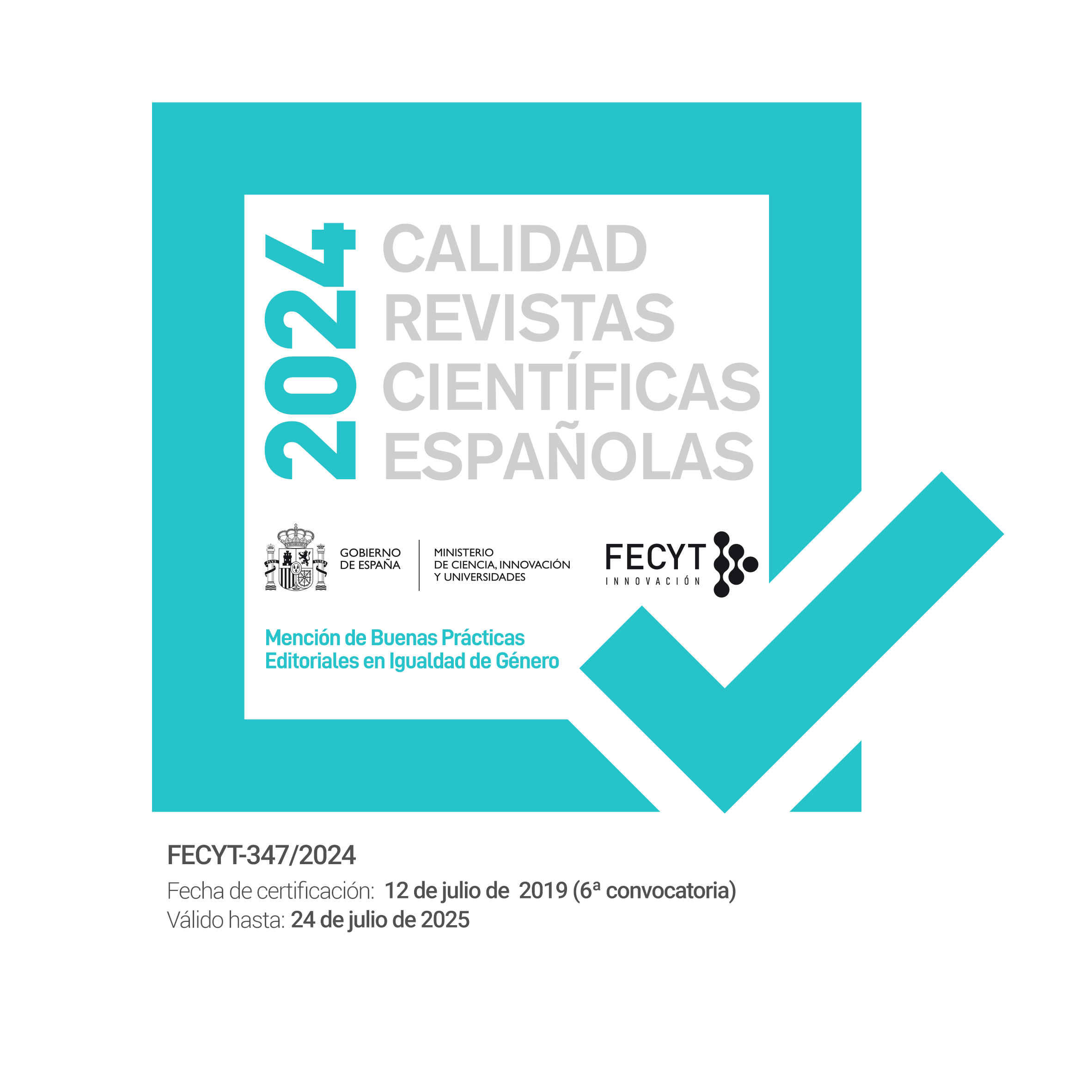Imágenes que desorientan: una instalación con múltiples caras
DOI:
https://doi.org/10.5944/etfvii.4.2016.15498Palabras clave:
Arte, política, estética, desorientación, espacioResumen
En este artículo, me centro en tres tácticas artísticas que identifico en la instalación de Vahit Tuna, de la exposición «Siempre somos espectadores…» organizada en el espacio DEPO, de Estambul en 2011. Dichas tácticas son la reconfiguración del espacio, la superimposición de diferentes elementos visuales y la apertura de canales afectivos. El análisis de esas tres vías va más allá de esta instalación en concreto, lo que permite explorar el rol de la distancia, la correlación entre la proximidad física y la habilidad para entender una imagen, el género del retrato y su subversión, el rol del afecto en el hecho de desafiar la fijeza en la representación de los símbolos nacionales. De este modo, se explorará la noción de la «desorientación» en relación a una discusión general de la estética y la política.
In this article, I focus on three artistic tactics that I identify in Vahit Tuna’s bust installation from the exhibition «We were always spectators…» in the art space DEPO, Istanbul, 2011: the reconfiguration of space, the superimposition of different visual elements, and the opening up of affective channels. The analysis of these tactics go beyond this specific installation and allows me to explore the role of distance, the correlation between physical closeness and the ability to grasp an image, the genre of portraiture and its subversion, and the role of affect in challenging the representational fixities of national symbols. In this way, I explore the notion of «disorientation » with regard to a more general discussion of aesthetics and politics.
Descargas
Citas
Alphen, Ernst van: Art in Mind: How Contemporary Images Shape Thought. Chicago, University of Chicago Press, 2005.
Ahmed, Sara: Queer Phenomenology: Orientations, Objects, Others. Durham and London, Duke University Press, 2006.
Ahiska, Meltem: «Monsters That Remember: Tracing the Story of the Workers Monument in Tophane», New Perspectives on Turkey, 45, 2011, 9-47.
Bal, Mieke: «From Cultural Studies to Cultural Analysis: ‘A Controlled Reflection on the Formation of Method.’» (interview) Interrogating Cultural Studies: Theory, Politics and Practice. (ed. Paul Bowman). Pluto Press, London, 2003, 30-41.
—, Of What One Cannot Speak: Doris Salcedo’s Political Art. Chicago and London, The University of Chicago Press, 2010.
—, «Affect and the Space We Share: Three Forms of Installation Art», The Next Thing: Art in the Twenty-First Century (ed. Pablo Baler). Plymouth, Fairleigh Dickinson University Press, 2013, 67-81.
Bryson, Norman: «Introduction: Art and Intersubjectivity», Looking In: The Art of Viewing (Mieke Bal), Critical Voices in Art, Theory and Culture Series. Amsterdam, G + B Arts International Press, 2001, 1-39.
Butler, Judith: The Psychic Life of Power: Theories in Subjection. Stanford, Stanford University Press, 1997.
Brilliant, Richard: Portraiture. London, Reaktion Books Press, 1991.
Debord, Guy: Society of the Spectacle. Sussex, Soul Bay Press, 2009.
KOSOVA, Erden: «Slow Bullet II.» Red Thread (online journal) 1, 2009. Online source: http://www.red-thread.org/en/article.asp?a=26
Kruse, P. and Stadler, M.: Multistable Cognitive Phenomena, New York, Springer Press, 1995.
Lakoff, G. and Johnson M.: Metaphors We Live by. London, The University of Chicago Press, 2003.
Macneill, Kate: «Art That Matters: Identity Politics and the Event of Viewing», The Shock of the Other: Situating Alterities, Thamyris/Intersecting: Place, Sex, Race (15). (eds. Silke
Horstkotte and Esther Peeren). Amsterdam, Rodopi Press, 2007, 117-126.
Mirzoeff, Nicholas: «On Visuality», Journal of Visual Culture, 5.1, 2006, 53-79.
Özden Firat, Begüm: «Bir Fotoğraf Bin Söze Bedel» (One Photograph is Worth a Thousand Words) Online source: <http://birdirbir.org/bir-fotograf-bin-soze-bedel/>
Ranciere, Jacques: The Politics of Aesthetics: The Distribution of the Sensible. London and New York, Continuum Press, 2004.
—, The Future of the Image. London and New York, Verso Press, 2007.
—, «Aesthetic Separation, Aesthetic Community: Scenes from the Aesthetic Regime of Art», Art&Research: A Journal of Ideas, Contexts and Methods, 2: 1, 2008, 1-15.
—, Aesthetics and Its Discontents. Cambridge, Polity Press, 2009a.
—, The Emancipated Spectator. London, Verso Press, 2009b.
Rimmon-KenaN, Shlomith: The Concept of Ambiguity: The Example of James, London, The University of Chicago Press, 1977.
Woodall, Joanna: Portraiture: Facing the Subject, Manchester, Manchester University Press, 1997.
Descargas
Publicado
Cómo citar
Número
Sección
Licencia
Los autores que publican en esta revista están de acuerdo con los siguientes términos:
- Los autores conservan los derechos de autor (copyright) de las obras publicadas y garantizan a la revista el derecho de ser la primera publicación del trabajo al igual que permiten la reutilización del mismo bajo la licencia de uso indicada en el punto 2.
- Las obras se publican en la edición electrónica de la revista bajo bajo una licencia Creative Commons Reconocimiento-NoComercial 4.0 Internacional, que permite a otros compartir el trabajo con un reconocimiento de la autoría del trabajo y de la publicación inicial en esta revista. Se pueden copiar, usar, difundir, transmitir y exponer públicamente, siempre que: i) se cite la autoría y la fuente original de su publicación (revista, editorial y URL de la obra); ii) no se usen para fines comerciales.
- Se permite y se anima a los autores a difundir electrónicamente las versiones pre-print (versión antes de ser evaluada) y/o post-print (versión evaluada y aceptada para su publicación) de sus obras antes de su publicación, ya que favorece su circulación y difusión más temprana y con ello un posible aumento en su citación y alcance entre la comunidad académica (por ejemplo, en repositorios institucionales o en su propio sitio web). Color RoMEO: verde. (Véase The Effect of Open Access) (en inglés).








